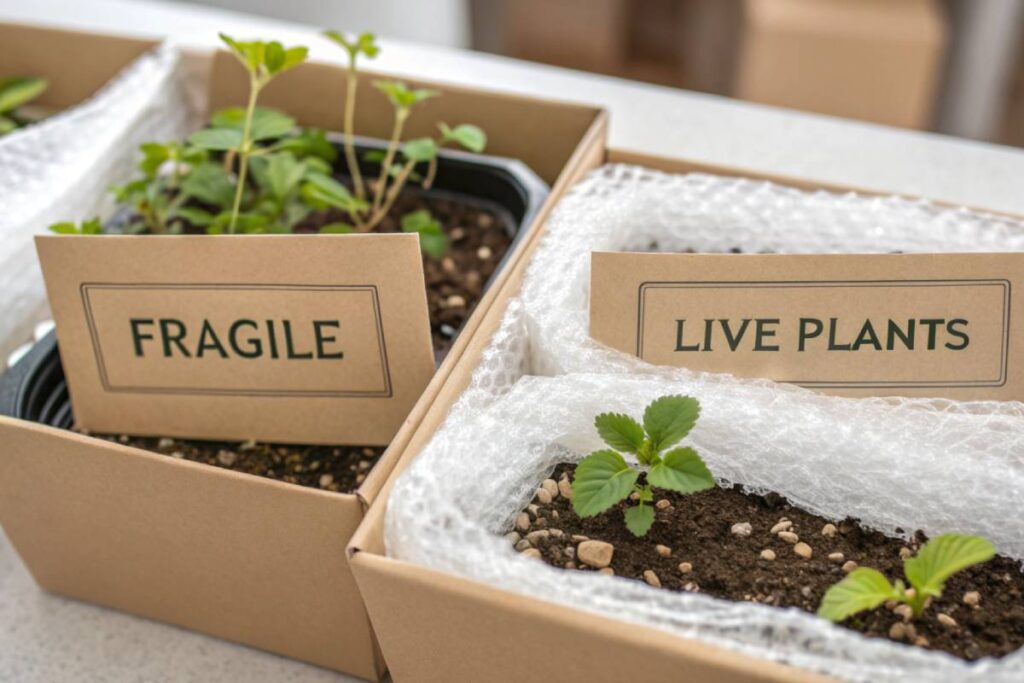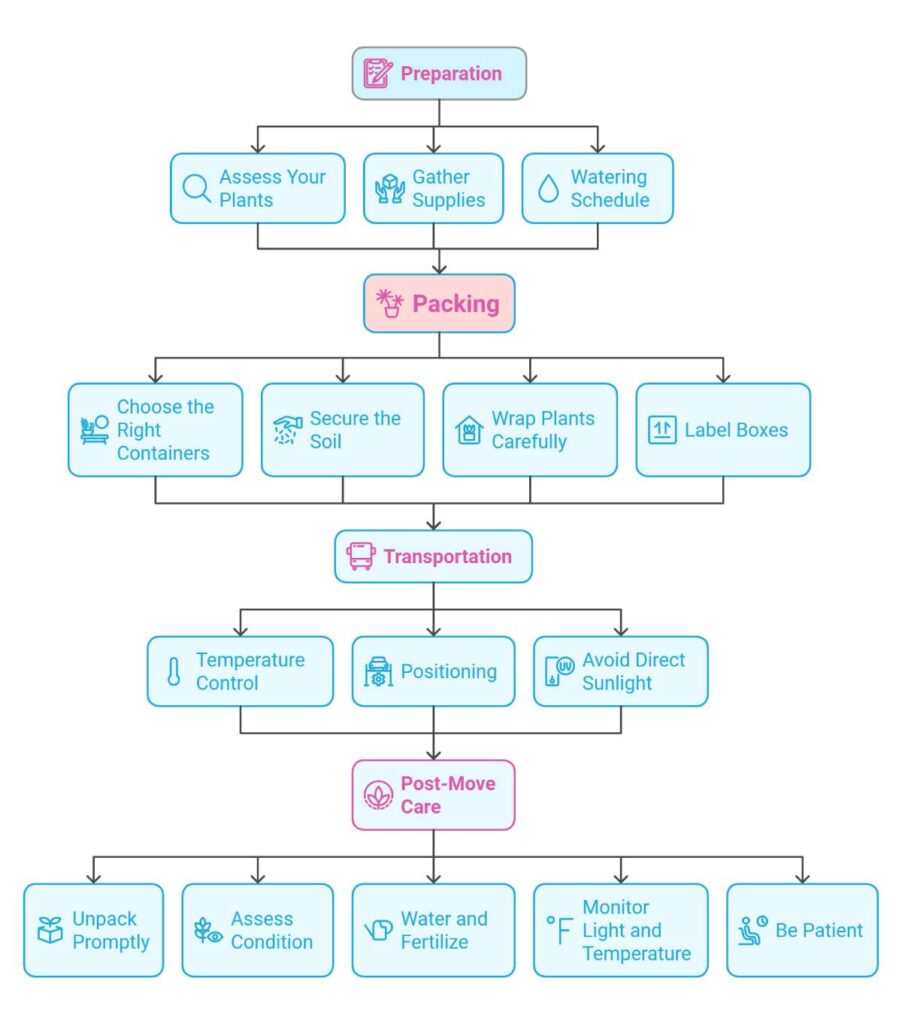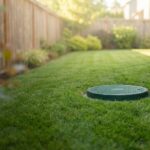Moving house plants is more than just logistics—it’s about preserving the life and vitality of your green companions.
Plants are natural air purifiers, mood boosters, and décor enhancers, so keeping them happy during a move ensures your new home feels just as warm and inviting.
From weather challenges to delicate handling, relocating plants can be tricky, but with the right strategies, you can avoid mishaps.
This guide provides essential tips for prepping, packing, and acclimating your plant family to their new environment, ensuring they thrive in their new home just as they did before.
Handling House Plants During a Move
Sending your leafy buddies on a field trip—that’s what moving house plants feels like. But with a bit of love and care, they’ll be as good as new in their new digs.
Why Bother Moving Your Plant Babies Right?
Plants are more than pretty décor—they’re like your home’s own mood boosters. Treat them right while moving, and they’ll keep making your space look and feel delightful.
- Air Magic: They’re nature’s air filters.
- Feel-Good Factor: Bring warmth and a cozy feel to your space.
- Plant Treasures: Money and hours go into caring for these green pals.
The Drama of Moving Your Plant Family
Uprooting your plant babies isn’t drama-free. Some hurdles can pop up along the way, so let’s tackle this head-on!
- Weather Woes: Temperature changes can give plants the jitters.
- Handle with Care: They’re a bit precious; rough handling is a no-no.
- Thirsty Troopers: Forgetting to water during the move—big mistake.
- New Digs Adjustment: Plants need time to settle in just like us.
Ready, Set, Go: Getting Plants Ready for the Big Move
A few clever tricks can keep your plant troop happy before, during, and after the move.
Plant Prep Steps:
- Water Like a Boss: A sprinkle just a few days before you hit the road keeps them neither thirsty nor drenched.
- Trim the Excess: Snip those dead bits; it’s a hair day for your plants.
- Check for Bugs: Creepy crawlies aren’t invited. Ensure they come pest-free.
- Secure with Good Pots: Plop them into sturdy containers; avoid bumps and spills.
| Task | Time Before Move | Reason |
|---|---|---|
| Watering | 2-3 days | Keeps soil just right during transport |
| Pruning | 1 week | Minimizes stress, makes them travel-ready |
| Pest Inspection | 1 week | No hitchhiking bugs in the new house |
| Repotting (if needed) | 2-3 weeks | Settles them into dependable containers |
For more smart hacks on packing and moving those green pals, don’t miss our guides on packing materials for valuables and specialty moving crates.
Stick to these tips, and your house plants will be living their best life in their new spot. ????
“Plants give us oxygen for the lungs and the soul.” – Linda Solegato

Choosing the Right Transportation
Moving your leafy friends to a new home can feel like a delicate mission. To make sure they arrive happy and healthy, you gotta give some careful thought to how you’ll transport them.
Selecting the Appropriate Containers
Containers aren’t just about a snug fit; they’re your plants’ safe haven during the journey. You want ones that give room and won’t tip over easily.
- Nursery Pots: Perfect for your dainty to medium-sized green pals. They’re feather-light and love a good water flow.
- Plastic Buckets: Bigger plants require something tough, like plastic buckets. These can stand up to the challenge without buckling.
- Wooden Crates: Got a plant that’s more like a tree? Wooden crates it is, offering solid support and a bit of a bear hug during travel.
Let’s break down your options in a quick peek:
| Container Type | Appropriate Plant Size | Benefits |
|---|---|---|
| Nursery Pots | Small to Medium | Lightweight, great drainage |
| Plastic Buckets | Medium to Big | Strong, steady for weighty plants |
| Wooden Crates | Massive or Tall | Stable, sturdy protection |
Good containers make all the difference, like a cushy ride for houseplants. For tips on packing fragile things, check out packing materials for valuables.
Ensuring Proper Ventilation for Plants
Breathing space is crucial for your leafy darlings while on the move. Poor air circulation can stress them out.
- Perforated Boxes: These have nifty breathing holes, letting air flow freely.
- Mesh Bags: Mesh bags are the go-to for little ones, allowing them to breathe easily and stay snug.
- Open Container Tops: For your towering plants, keep those tops open if it’s safe—it keeps the air flowing like a gentle breeze.
Here’s a no-fuss guide to keeping them ventilated right:
| Method | Suits Plant Size | Perks |
|---|---|---|
| Perforated Boxes | Small to Medium | Plenty of air, easy to carry |
| Mesh Bags | Mini & Mighty Small | Breathable, feather-weight |
| Open Container Tops | Medium to Best for Bigger | Air aplenty, hassle-free handling |
For more on securing your plant companions on the go, pop over to securing plants in the moving vehicle.
Picking the right pots and keeping the air gentle is like giving plants a first-class ticket. Plant lovers know it’s as crucial as handling moving artwork or moving a piano.
Packing and Transporting House Plants
Safely Packing Plants for Transit
Moving your green buddies to a new home doesn’t have to be nerve-wracking. Here’s how to pack them up without the drama:
- Pick the Right Gear: Make sure you’ve got sturdy boxes, some packing paper, and that trusty bubble wrap.
- Snip and Sip: Give your plants a little haircut by snipping off those sad, droopy leaves and thirsty branches. Water them a couple of days before the big event—not on the day itself—to prevent any soggy situations.
- Keep ’em Snug: Pop your plants in those boxes, and fill any extra space with packing paper so they don’t slide around. Just wrap bigger plants with plastic bags to shield their leafy bits.
- Mark Your Territory: Slap a “Fragile” and “Live Plant” label on those boxes to let everyone know what’s inside.
Securing Plants in the Moving Vehicle
When it comes to hitting the road, here’s how to keep your plants safe:
- Stand Tall: Keep those plant boxes upright so they don’t do a tumble—think of them like little green skyscrapers.
- Keep Cool: Plants aren’t fans of sunbathing or freezing. Try to use a climate-controlled ride if you’ve got one.
- Support the Giants: Taller plants might need a little help with stakes or supports so they don’t slump over during the ride.
- Gentle Restraints: Secure your boxes with soft tie-downs to stop the sliding drama without squashing your plants.
Table:
| Plant Type | Prep Steps | Box Size | Vehicle Setup |
|---|---|---|---|
| Small Plant | Snip, Sip | Small Box | Up and Safe |
| Medium Plant | Snip, Sip | Medium Box | Up, Soft Touch |
| Large Plant | Snip, Stake | Big Box | Up, Cool Ride |
Need more moving tricks?
- For tips on keeping treasures safe, check packing materials for valuables.
- Discover how to move your priceless artwork.
- Find ways to safekeep your fancy flat screen TV.
- Learn about expert help with antiques at specialty movers for antiques.

Acclimating Plants to Their New Environment
Post-Move Care for House Plants
After you’ve hauled those houseplants to a new place, it’s time to show them some love so they can settle in nicely. This little TLC ensures they stay in tip-top shape.
How to Pamper Your Plants After the Move:
- Unpacking: Gently get your green buddies out of their travel wraps without squishing any leaves or breaking stems. Be a plant whisperer here.
- Watering: Peek into the soil to see if it’s thirsty. Don’t drown it – plants like the Goldilocks treatment, not too dry, not too wet, just right.
- Positioning: Temporarily park them in a spot with good light as you decide on their forever home.
- Cleaning: Wipe those leaves down with a damp cloth. You know, a little spa day so they can breathe and soak up that sunlight.
Checklist for Post-Move Care:
| Task | How Important | What to Do |
|---|---|---|
| Unpacking | Really Important | Remove packing stuff gently |
| Watering | Kinda Important | Check if soil needs a drink |
| Positioning | Super Important | Place in temp spot with good light |
| Cleaning | Not Super High | Freshen leaves with a swipe |
Adjusting Plants to a New Location
Have your plants all unpacked and pampered? Now it’s time to help them feel cozy in their new digs. They’ll need a few weeks to get used to the change in light, temperature, and humidity.
How to Help Plants Settle In:
- Light Exposure: Ease them into their new light settings. Don’t shock them by suddenly cranking up the sunlight – think of it like easing into a hot bath.
- Temperature Monitoring: Plants love stable temps. Don’t leave them by the radiator or an open window, or they might throw a tantrum.
- Humidity Check: Make sure they don’t dry out, especially the tropical types. Got a humidifier? Put it to good use if the air feels like a desert.
- Keep an Eye Out: If leaves start looking hangry or sad, maybe wrinkly or turning yellow, adjust their new spot or give them some extra care.
Checklist for Adjusting Plants:
| Task | How Important | What to Do |
|---|---|---|
| Light Exposure | Super Important | Slowly up the lights |
| Temperature Monitoring | Medium | Keep a steady temp |
| Humidity Check | Medium | Use humidifier for dry air |
| Watch for Stress | Super Important | Look for sad leaves and adjust care |
Curious how to handle other precious belongings while moving? Check out our guides on moving artwork, moving musical instruments, and specialty movers for antiques.
Common Issues and Solutions
When you’re packing up and hitting the road, your leafy buddies can face a few hiccups. But don’t worry! Knowing what’s up and how to fix it means they’ll settle in just fine.
Signs of Stress in Plants
You want to be on the lookout for these signs of stress in your plants, so you can swoop in like a superhero and give them what they need:
- Wilting leaves: Chances are, they’re thirsty or feeling a bit too cozy in the heat.
- Yellowing leaves: They might be missing out on some much-needed nutrients or not getting enough to drink.
- Leaf drop: A new spot or a bit of a temperature rollercoaster might be the culprit.
- Browning edges: Too much sunbathing or pesky drafts are usually behind this.
| Signs | What’s Bugging Them? |
|---|---|
| Wilting | Need water, too hot |
| Yellowing | Hungry for nutrients, drinking issues |
| Dropping | New digs, temp change |
| Brown edges | Sun overdose, draft attack |
Remedies for Plant Stress During a Move
Yep, you can totally help your green pals bounce back! Here’s the game plan:
- Wilting leaves: Keep ’em damp but not swimming. Give them a gentle mist if things are dry, and ease them outta the sun right after moving.
- Yellowing leaves: Peek at the soil, and adjust their watering schedule if needed. A little fertilizer love will perk them up. Keep them outta the drafty or too-hot spots.
- Leaf drop: Let them ease into their new place by parking them in the shade first. Keep ’em comfy by controlling the temperature around them.
- Browning edges: Time to shuffle them out of the sunlight or away from heaters. Pump up the moisture around them with a humidity tray or bring in a humidifier.
For a treasure trove of tips on relocating your plants without a hitch, check out our friendlier articles on moving home office equipment or packing materials for valuables. This way, your house plants will totally rock their new crib!
If you’re a plant guru dealing with those fancy rare kinds, a bit more caution’s in order. Dive into our guides on specialty moving crates and moving an aquarium for the lowdown on handling special items.
Special Care for Rare and Delicate Plants
Moving fragile and rare plants can feel like trying to juggle eggs on a tightrope. These green treasures need a bit of tender love to land safely in their new home. Let’s chat about how to give these plants the VIP treatment they deserve when moving them.
Strategies for Protecting Rare Plants
Rare plants can throw tiny tantrums with the slightest change if not handled properly. So, let’s make sure we’re ready to pamper them like the royalty they are.
- Get to Know Them Better: Think of it like first dates. Each plant has unique quirks. Learn what makes them tick, and cater to it for a smooth move.
- Upgrade Their Digs: Spring for the fancy digs with specialty containers. These can help keep your leafy friends safe from bumpy rides.
- Moisture is Key: Keep the soil just right. Not too dry, not drowning. Perfect for keeping roots calm and not too sassy.
- Name Tag Parade: Slap a label on those containers. It’s like putting a bow on a present, helps everyone know what’s inside and how to treat it right.
Examples of Specialty Containers:
| Plant Type | Container Type | Benefits |
|---|---|---|
| Orchids | Ventilated Orchid Crates | Helps them breathe and prevents soggy situations |
| Bonsai Trees | Custom Wooden Boxes | Supports their twisty, turny trunks |
| Carnivorous Plants | Enclosed Terrariums | Keeps ’em humid and happy |
Extra Precautions for Delicate Plant Species
Some plants need a bit more fuss, and that’s okay! They’re worth every extra precaution to avoid a botanical meltdown.
- Playing it Cool with Temps: They’re fussy about their thermostat. Use insulated or warm blankets to shield them from wild weather moods.
- Less Touchy-Feely: Limit the plant cuddles by securing them snugly in the car. Soft ties and padding are the bodyguards here.
- Slow and Steady Transition: Bring them into their new digs gradually. Like introverts at a party, let them warm up to the new spot slowly.
- Stress-Busting Sprays: A little spritz of anti-stress spray works wonders for their move-related woes.
Common Delicate Plants and Their Needs:
| Plant Species | Temperature Range (°F) | Additional Care |
|---|---|---|
| Tropical Ferns | 60-75 | Love baths of humidity, but indirect light only |
| African Violets | 65-70 | No sunbathing for them, prefer even moisture |
| Venus Flytraps | 70-90 | Thrive on high humidity and only drink distilled water |
Once you’ve mastered the plant move, your leafy buddies will be thriving in no time. Check out more tips and tricks with our articles on moving artwork, specialty movers for antiques, and moving home office equipment.
Conclusion
Relocating house plants requires careful planning, but with a little effort, your green companions can settle into their new home seamlessly.
By prepping plants properly, choosing the right containers, and ensuring proper ventilation, you create the best conditions for a smooth journey.
Once at the destination, prioritize gentle unpacking, gradual acclimatization, and consistent post-move care to help plants adjust. Whether you’re dealing with common houseplants or rare species, a thoughtful approach ensures their health and longevity.
Treat your plants like the valuable treasures they are, and they’ll repay you with beauty, fresh air, and a cozy home atmosphere for years to come.
FAQs
How soon should I start preparing my plants for a move?
Start 2–3 weeks before the move to report if needed, and inspect for pests about a week prior.
Can I move plants in their decorative pots?
It’s better to use sturdy nursery pots or plastic buckets during transit to prevent breakage.
How do I keep plants from wilting during the move?
Water them 2–3 days before the move, avoid extreme temperatures, and ensure proper ventilation.
What should I do if my plant shows stress after the move?
Check light, temperature, and humidity levels. Adjust conditions as needed and give them time to recover.
Are there specific containers for rare plants?
Yes! Use ventilated crates for orchids, custom wooden boxes for bonsai, and enclosed terrariums for carnivorous plants.





















